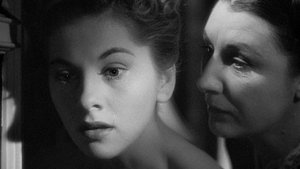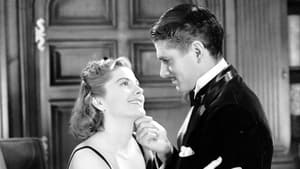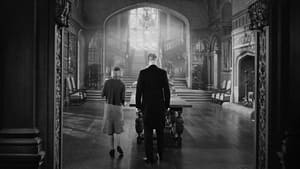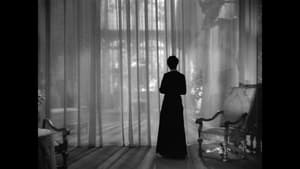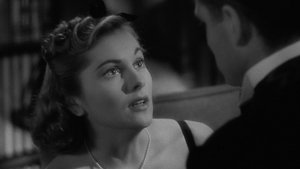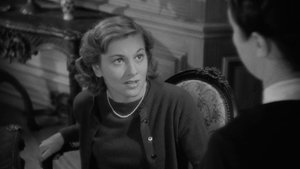Contact: info@alwanfilm.com
Video Sources 0 Views
- Watch trailer
- Rebecca

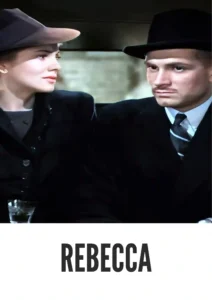
Synopsis
Table of Contents
ToggleReview: Rebecca 1940 Colorized – A Timeless Tale of Love and Intrigue in Vivid Color

Introduction
In the annals of cinematic history, few films have captured the imagination of audiences quite like “Rebecca” (1940). Directed by the visionary filmmaker Alfred Hitchcock, this psychological thriller has stood the test of time, leaving an indelible mark on the landscape of cinema. However, what sets this particular rendition apart is its early colored version, which adds a new layer of intrigue to an already captivating narrative. In this article, we will delve into the impact of colorization on the viewing experience of “Rebecca” (1940) and discuss its significance in the context of film history.
Check The Full Colorized Movies List
Check Our Colorized Movies Trailer Channel
Understanding Rebecca 1940 Colorized: Director, Cast, and Genre
“Rebecca” (1940) stands as a testament to Alfred Hitchcock’s directorial prowess. With a keen eye for detail and a mastery of suspense, Hitchcock brings Daphne du Maurier’s novel to life on the silver screen. The film boasts a stellar cast including Laurence Olivier as Maxim de Winter, Joan Fontaine as the unnamed protagonist, and Judith Anderson as the sinister Mrs. Danvers. Set against the backdrop of a sprawling English estate, “Rebecca” (1940) straddles the line between romance, mystery, and psychological drama, cementing its status as a genre-defying classic.
Exploring the World of Rebecca 1940 Colorized: Plot and Characters
At its core, “Rebecca” (1940) tells the story of a young woman who marries a wealthy widower and finds herself ensnared in the shadow of his deceased first wife, the titular Rebecca. As the protagonist navigates the treacherous waters of her new life at Manderley, she soon discovers that dark secrets lurk beneath its opulent facade. From the brooding presence of Maxim to the menacing Mrs. Danvers, each character adds depth and intrigue to the film’s intricate plot.
The Art of Film Colorization
Film colorization is a process whereby black and white films are digitally transformed into color. While controversial among purists, colorization has become increasingly prevalent in recent years, offering audiences a fresh perspective on classic cinema.
Early Colored Films: A Brief History
The history of colored films dates back to the early days of cinema, with filmmakers experimenting with various techniques to add color to their creations. From hand-painted frames to early Technicolor processes, the evolution of colored film has been a testament to human ingenuity and artistic innovation.
Rebecca 1940 Colorized and Its Early Colored Version
The decision to release “Rebecca” (1940) in a colorized format was met with both excitement and skepticism. While some welcomed the opportunity to see Hitchcock’s masterpiece in a new light, others feared that colorization would detract from the film’s timeless beauty. Nevertheless, the early colored version of “Rebecca” (1940) offers a unique viewing experience, allowing audiences to appreciate its rich cinematography and lush landscapes in vibrant detail.
The Debate Over Film Colorization
The debate over film colorization has raged on for decades, with proponents arguing that it breathes new life into classic films and makes them more accessible to modern audiences, while detractors maintain that it undermines the artistic integrity of the original work. Ultimately, the decision to colorize a film is a deeply subjective one, with no easy answers or definitive conclusions.
Examining “Rebecca” 1940 as an Early Colored Film
As with any colorized classic, the impact of colorization on “Rebecca” (1940) is a matter of personal interpretation. Some may argue that it enhances the film’s visual appeal and immerses viewers in its world, while others may feel that it detracts from the stark beauty of Hitchcock’s original vision. Regardless of where one stands on the issue, there’s no denying the enduring power of “Rebecca” (1940) as a cinematic masterpiece.
Influence and Legacy: Rebecca 1940 Colorized’s Impact on Cinema
“Rebecca” (1940) has left an indelible mark on the world of cinema, inspiring countless filmmakers and spawning a Western remake trend that continues to this day. From Sergio Leone’s “A Fistful of Dollars” to a slew of Hollywood adaptations, the influence of Hitchcock’s classic can be felt far and wide.
Director’s Cinematic Legacy: Beyond Rebecca 1940 Colorized
Alfred Hitchcock’s influence extends far beyond “Rebecca” (1940), with a vast body of work that continues to captivate audiences around the globe. From “Psycho” to “Vertigo,” Hitchcock’s films are celebrated for their innovative storytelling, masterful direction, and unforgettable characters.
Themes Explored in Rebecca 1940 Colorized
“Rebecca” (1940) delves into a myriad of themes including love, jealousy, betrayal, and the nature of identity. Through its richly drawn characters and atmospheric setting, the film explores the darker aspects of human nature while also offering a glimmer of hope amidst the shadows.
Reception and Controversy Surrounding Rebecca 1940 Colorized
Upon its release, “Rebecca” (1940) received widespread critical acclaim, with many praising Hitchcock’s direction, the performances of its cast, and its hauntingly beautiful cinematography. However, the decision to release the film in a colorized format has sparked controversy among fans and purists alike, reigniting the age-old debate over the preservation of cinematic classics.
Where to Watch Rebecca 1940 Colorized Online
For those eager to experience the timeless magic of “Rebecca” (1940), the film is readily available on popular streaming platforms such as Netflix, Amazon Prime, and Hulu. Whether you choose to watch it in its original black and white format or the early colored version, “Rebecca” (1940) remains a must-see for cinephiles of all ages.
Certainly! Let’s expand upon the FAQs about “Rebecca” (1940) to provide more detailed answers and address additional questions that viewers might have:
FAQs About Rebecca 1940 Colorized
Q: Is “Rebecca” (1940) based on a true story?
A: No, “Rebecca” (1940) is not based on a true story. It is an adaptation of the 1938 Gothic novel written by British author Daphne du Maurier. The novel itself is a work of fiction, although it draws inspiration from du Maurier’s own experiences and observations of the aristocratic lifestyle.
Q: Who plays the role of Maxim de Winter in “Rebecca” (1940)?
A: Maxim de Winter, the enigmatic and brooding master of Manderley, is portrayed by the acclaimed British actor Laurence Olivier. Olivier’s performance in “Rebecca” (1940) is widely praised for its complexity and depth, capturing the character’s inner turmoil and conflicted emotions.
Q: What is the significance of the title “Rebecca”?
A: The title “Rebecca” refers to the deceased first wife of Maxim de Winter, whose presence looms large over the inhabitants of Manderley. Although Rebecca herself never appears on screen, her memory exerts a powerful influence on the other characters, shaping their actions and relationships throughout the film.
Q: Who is Mrs. Danvers in “Rebecca” (1940)?
A: Mrs. Danvers is the formidable housekeeper of Manderley and a key antagonist in “Rebecca” (1940). Played with chilling intensity by actress Judith Anderson, Mrs. Danvers is fiercely loyal to the memory of Rebecca and harbors a deep-seated resentment towards the second Mrs. de Winter, whom she views as an intruder in her former mistress’s domain.
Q: What is the significance of Manderley in “Rebecca” (1940)?
A: Manderley, the imposing estate where much of the film’s action takes place, serves as a symbol of wealth, privilege, and secrets. Its grandeur and opulence hide a dark underbelly of betrayal and tragedy, reflecting the psychological tension and emotional turmoil that pervade the story.
Q: How does “Rebecca” (1940) differ from the novel by Daphne du Maurier?
A: While “Rebecca” (1940) remains largely faithful to the source material, there are some notable differences between the film and the novel. Hitchcock’s adaptation streamlines certain plot elements and character motivations for cinematic effect, resulting in a tighter narrative structure and heightened suspense. Additionally, the film omits or alters certain subplots and minor characters, focusing instead on the central relationship between the protagonist and Maxim de Winter.
Q: What is the significance of the film’s early colored version?
A: The early colored version of “Rebecca” (1940) represents a departure from the film’s original black and white format, offering viewers a fresh perspective on Hitchcock’s masterwork. While the decision to colorize the film has sparked debate among cinephiles, it provides an opportunity to appreciate the rich visual tapestry of Manderley and its inhabitants in vibrant detail.
Q: How does “Rebecca” (1940) compare to other films directed by Alfred Hitchcock?
A: “Rebecca” (1940) is often regarded as a departure from Alfred Hitchcock’s typical suspense thrillers, which tend to focus on themes of crime, espionage, and psychological intrigue. However, the film shares many stylistic and thematic elements with Hitchcock’s later works, including its emphasis on atmosphere, suspenseful pacing, and complex character dynamics. While “Rebecca” (1940) may lack the overt thrills of films like “Psycho” or “Vertigo,” it remains a quintessential example of Hitchcock’s mastery of the cinematic medium.
Q: What awards did “Rebecca” (1940) win?
A: “Rebecca” (1940) received critical acclaim upon its release and was nominated for eleven Academy Awards, ultimately winning two: Best Picture and Best Cinematography (Black-and-White) for George Barnes. The film’s success at the Oscars solidified its reputation as one of the greatest films in cinematic history and helped cement Alfred Hitchcock’s legacy as a master filmmaker.
Q: Is “Rebecca” (1940) available for streaming online?
A: Yes, “Rebecca” (1940) is available for streaming on various platforms, including Netflix, Amazon Prime, and Hulu. Whether you prefer to watch it in its original black and white format or the early colored version, “Rebecca” (1940) remains easily accessible to modern audiences eager to experience the timeless magic of Hitchcock’s classic.
Conclusion
In conclusion, “Rebecca” (1940) remains a timeless classic that continues to captivate audiences with its gripping narrative, unforgettable characters, and stunning visuals. While the debate over film colorization may rage on, one thing remains clear: Alfred Hitchcock’s masterpiece is best experienced in its original black and white format. As we reflect on the enduring legacy of “Rebecca” (1940), let us also ponder the larger questions it raises about the nature of art, storytelling, and the passage of time. Whether you’re a seasoned cinephile or a casual moviegoer, “Rebecca” (1940) is a film that demands to be seen and savored for generations to come.
